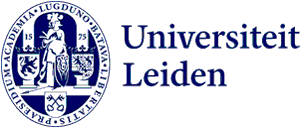
Tom Kouwenhoven wants to develop a bridge between AI and humans
It is a familiar phenomenon: you ask the assistant on your phone to call your mother, but it calls a friend instead. Tom Kouwenhoven, PhD student in the SAILS programme, investigates how humans and Artificial Intelligence (AI) can better communicate with each other, so that these kinds of situations will no longer occur in the future.
One-way traffic
‘The example of the assistant on your phone clearly shows where the problem currently lies,’ says Tom Kouwenhoven. ‘The assistant tries its best, but doesn't really understand you and often doesn't know who your mother is, while that is usually the case in communication between people. At the moment, there is no real communication between humans and AI, but it rather is one-way traffic. The human being gives the computer a lot of beautifully formatted data, data that is already in order and in which is labelled what is good and what is bad. As a result, the algorithm learns the relationship between input and output: these values are good and those values are bad. In my research, I am looking at how communication between humans and AI can actually occur, and trying to add a social learning component to the process. In the distant future, humans can then also learn from computers and they can work together better.’
Shared knowledge
Kouwenhoven seeks the basis for communication between humans and AI by looking at how people communicate with each other. Kouwenhoven: ‘In human communication, we constantly adapt to our conversation partner, both in our use of language and in our gestures. In our interaction, we look for knowledge we share. For example, we know what left and right are. If someone turns right when the other person says we should go left, we can go back to that shared knowledge in the communication, thus repairing the miscommunication and building on it. We must therefore look at how we can also build up this shared knowledge with the computer, so that an assistant can learn from it, for example by allowing many interactions to take place. With children, we keep repeating that something is an apple, even if it is red, green or cut into pieces, while we expect the computer to recognise the apple immediately. Our expectations of the computer are too high.’
Experiment
To take a first step towards communication with computers, Tom Kouwenhoven has developed an experiment: 'The idea is that a human being works together with a computer to build a strategy for playing a game. In it, the two players, who are both in a different room, must try to end up with a black block in a square of four coloured blocks in a block of the same colour. They see their own movements and colours and the movements of the other, but not which colours the other's blocks are. In order to finish on the same colour and thus score points, they have to find a way to communicate with each other about which colour they want to end on and where it is. The computer learns by the relationship between an action and a reward, and not by entering a lot of data beforehand. Moreover, both participants have to keep learning over time in order to keep improving their communication and thus the results. In this way, hopefully the movements and strategies of both parties will create a form of communication to play the game, a kind of symbolic language, with which I want to demonstrate that communication is possible between humans and AI.’


Collaboration
Kouwenhoven hopes that his research can add a small piece to the large communication puzzle that needs to be laid. ‘With my research, I want to ensure that a bridge is built between AI and humans,’ he explains. ‘The computer is good at processing large amounts of data, while humans are very good at putting things into context. If both do what they do best, they can cooperate better and we will benefit optimally from this in the future.’
Text: Chris Flinterman
